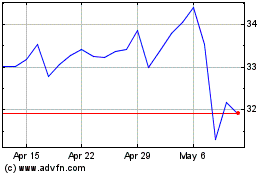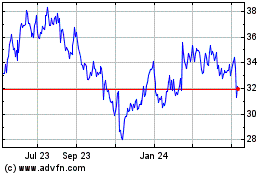Notice of Exempt Solicitation. Definitive Material. (px14a6g)
May 04 2017 - 5:27PM
Edgar (US Regulatory)
Vishay Precision (NYSE:VPG)
Historical Stock Chart
From May 2024 to Jun 2024

Vishay Precision (NYSE:VPG)
Historical Stock Chart
From Jun 2023 to Jun 2024
